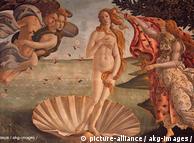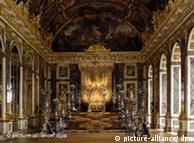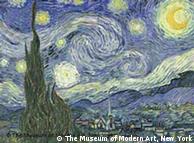Art | 02.02.2011
For decades, museums have been looking for ways to use technology to enhance visitors' impressions. Interactive exhibits, searchable databases, and cataloging their collections online are all options museums have been exploring in order to let more people have a deeper experience of art.
Now, Google's controversial Street View is the latest technology to have been pressed into service in the name of high culture. By going to the Google Art Project website, users can take virtual tours of selected rooms in 17 major art museums and galleries, and more rooms continue to be added all the time.
'A game changer'
The concept is being supported by some of the biggest names in the museum world, and it has great potential, curators and art educators say.
"It could be the game changer," Julian Raby of the Freer Gallery of Art in Washington, DC, told Reuters news service. The Freer, part of the Smithsonian, is one of 17 galleries participating in the Art Project.
The concept was started by Google employee Amit Sood, during time his employer freed up for personal initiatives. He had the idea of using Street View technology to develop virtual tours.
New use for technology
It works like this: Cameras mounted on a special trolley traveled through empty galleries after hours, taking 360-degree images of selected rooms which were then stitched together. So far 385 museum rooms are online and navigable. The company plans to add more in the coming years.
 Bildunterschrift: Botticelli's 'Birth of Venus' also got the 'gigapixel' treatment
Bildunterschrift: Botticelli's 'Birth of Venus' also got the 'gigapixel' treatment
Viewers can travel the halls of participating museums and galleries, and zoom in on the individual paintings there. Seventeen works were photographed using "gigapixel" photo-capturing technology, resulting in an image on the computer containing seven billion pixels and providing detail not visible to the naked eye.
Nelson Mattos, a vice president of engineering at Google, said the site would help democratize high art, allowing people from around the world who were unlikely to see the originals, to come close to the experience on the Internet.
"This really represents a major step forward in the way people are going to interact with these beautiful treasures of art around the world," he said.
Interactivity and gigapixels
The technology adds a new layer of interactivity; viewers can build "private collections," add comments, and share information.
Speaking at the event launch at the Tate Gallery in London, Mattos told the media that he was confident that no matter how advanced the technology, the new site would never replace visiting the museums.
"We obviously don't believe this technology is going to prevent people from coming to the museums," he added. "We hope that the opposite will happen."
Each museum chose one work to be photographed using gigapixel-capturing technology, resulting in an image on the computer containing seven billion pixels and providing detail not visible to the naked eye. That means online viewers can zoom in to see every single brush stroke of a painting.
Zooming in on art
The works that got this treatment include Vincent van Gogh's "The Starry Night" and "In the Conservatory" by Edouard Manet.
 Bildunterschrift: Großansicht des Bildes mit der Bildunterschrift: No chance to get to Paris? Versailles can be visited by Street View
Bildunterschrift: Großansicht des Bildes mit der Bildunterschrift: No chance to get to Paris? Versailles can be visited by Street View
"We're interested in getting depth of understanding of a limited amount of works," said Nicholas Serota, director of the Tate Gallery in London, which took part in the project.
More than 1,000 additional works have been photographed in high resolution for the project and "hung" in the virtual galleries, as well. Visitors can go up to a wall, look at a painting, and zoom in on it in detail.
The museums featured on the site include the Alte Nationalgalerie in Berlin, the Freer in Washington, the Uffizi in Florence, the Palace of Versailles in France, Museum Kampa in Prague, the Rijksmuseum and Van Gogh Museum in Amsterdam, the State Hermitage Museum in St Petersburg, the Museum of Modern Art in New York, London's National Gallery, and the and the Reina Sofia in Madrid, among others.
Author: Jennifer Abramsohn (AFP, Reuters)
Editor: Kate Bowen

沒有留言:
張貼留言